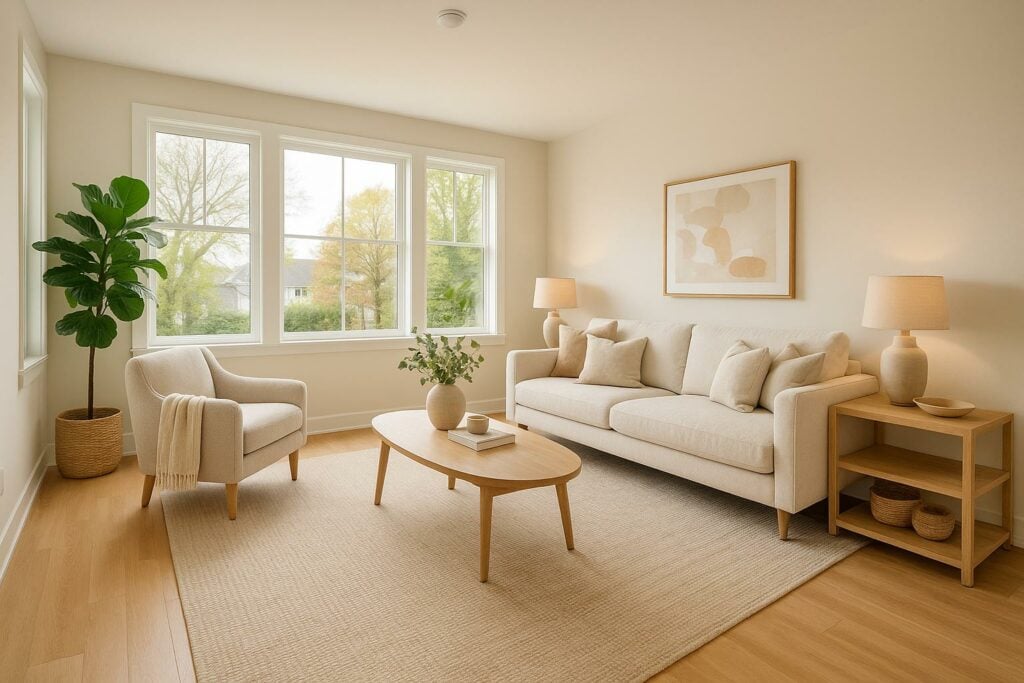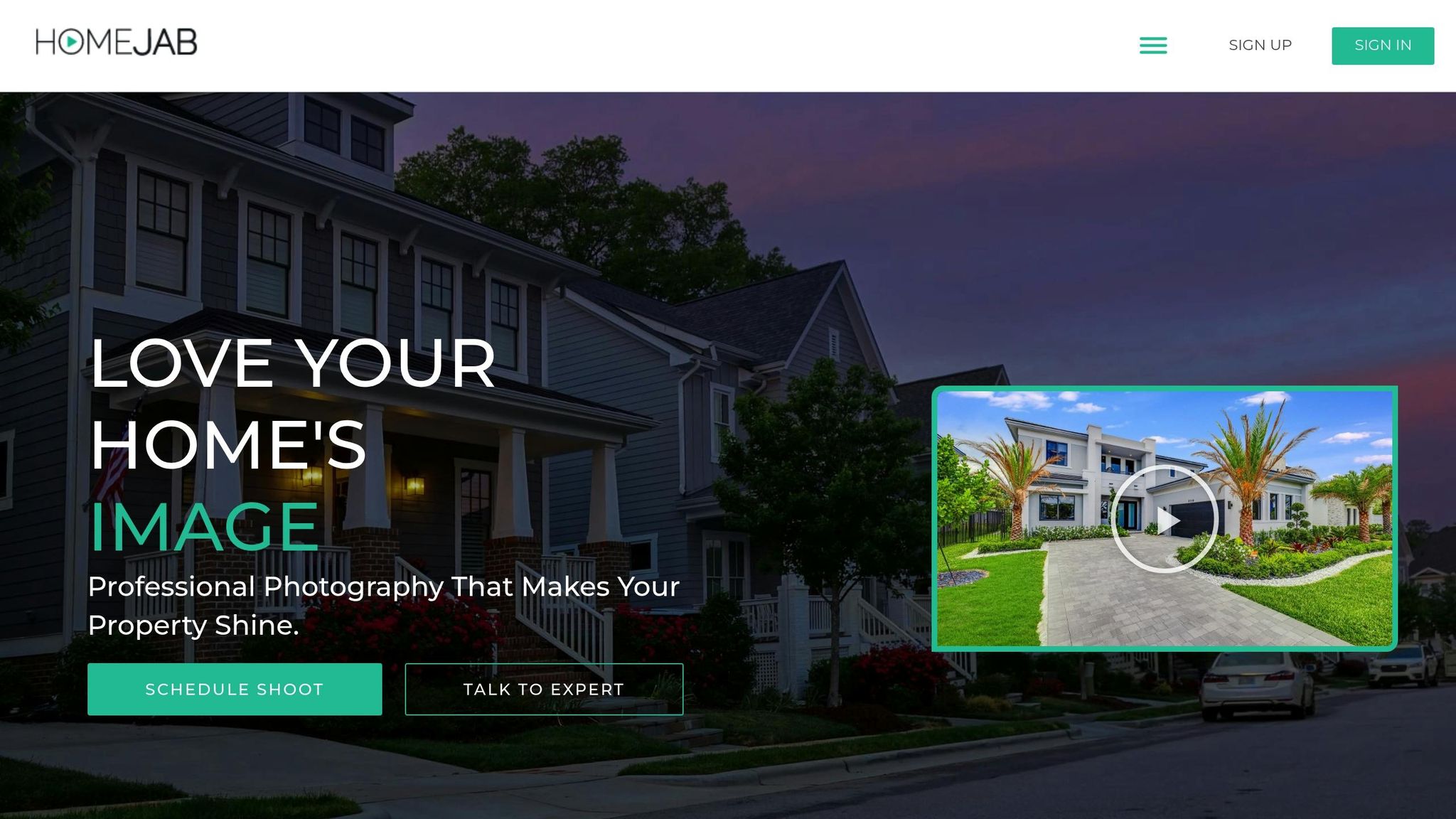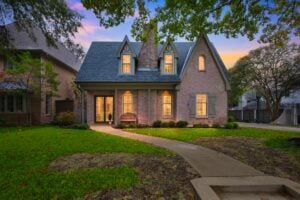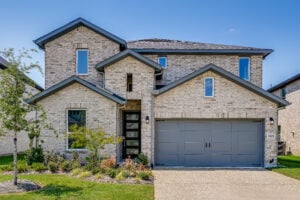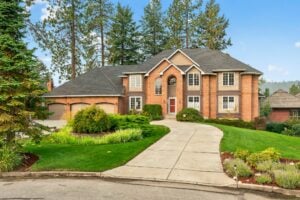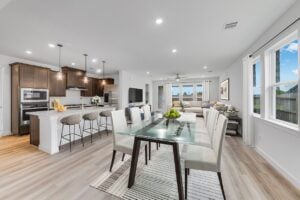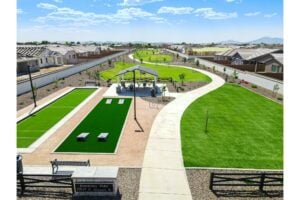Professional real estate photos sell homes faster and often for more money. Amateur photos, while cheaper, can hurt a property’s appeal and lead to longer market times or lower offers. Here’s why professional photography matters:
- First Impressions Count: High-quality photos grab attention online, while poor ones can turn buyers away instantly.
- Better Sales Outcomes: Professional images reduce market time and boost buyer interest, often leading to higher offers.
- Technical Superiority: Pros use advanced cameras, lighting, and editing to showcase properties effectively, unlike quick smartphone snaps.
- Specialized Services: Options like drone shots, 3D tours, and virtual staging elevate listings, making them more competitive.
Quick Comparison:
| Aspect | Professional Photography | Amateur Photography |
|---|---|---|
| Equipment | High-end cameras, wide-angle lenses | Smartphones or basic cameras |
| Image Quality | Sharp, well-lit, balanced colors | Often blurry, poorly lit, distorted |
| Composition | Staged, clutter-free, optimized angles | Cluttered, awkward angles, eye-level shots |
| Editing | Advanced software for corrections | Minimal or no editing |
| Services Included | Drone shots, 3D tours, virtual staging | Basic photos only |
Professional photography is an investment that pays off in quicker sales, better offers, and a stronger reputation for agents. Amateur photos may save money upfront but often cost more in the end.
Top 5 Amateur Mistakes in Real Estate Photography
Professional Real Estate Photography
Professional real estate photography plays a crucial role in making property listings stand out, grabbing buyers’ attention, and ultimately boosting sales. The difference between a polished professional photo and a quick smartphone shot can be dramatic, influencing how appealing a property looks and how it performs on the market. This edge comes from expertise, advanced equipment, and refined techniques.
What Sets Professional Photography Apart
Professional photographers rely on high-quality DSLRs equipped with wide-angle lenses to capture entire rooms in a way that feels natural and inviting. They use advanced lighting techniques to balance natural light from windows with artificial lighting, eliminating harsh shadows and ensuring even brightness throughout the space. Tools like multiple flash units and reflectors are often part of their setup.
Post-production editing is another game-changer. Professionals meticulously adjust colors, enhance details, and correct imperfections. For instance, they make white walls look clean and sharp, bring out the warmth of hardwood floors, and maintain consistent quality across all images.
Their expertise goes beyond technical skills. A professional photographer understands composition and staging, arranging shots to highlight a property’s best features and optimize the perception of space. Additionally, they often provide a range of specialized services to take property listings to the next level.
Comprehensive Services Offered by Professionals
Modern real estate photographers don’t just stop at taking interior photos. They deliver a variety of visual marketing tools designed to showcase properties in the best possible way.
- HDR Photography: By combining multiple exposures of the same shot, HDR photography ensures details are clear in both bright and shadowed areas. This technique makes windows, interiors, and exteriors look perfectly balanced.
- Aerial Photography and Drone Videography: These services provide breathtaking overhead views that highlight property boundaries, nearby amenities, and outdoor features. They’re particularly effective for larger homes or properties with extensive landscaping.
- 3D Virtual Tours: These interactive experiences allow potential buyers to explore properties online as if they were walking through in person. They’re especially valuable for out-of-town buyers or when in-person visits aren’t practical.
- Virtual Staging: Instead of physically staging a home, virtual staging digitally adds furniture and décor to empty spaces. This helps buyers visualize the property’s potential without the expense or hassle of moving actual items.
Platforms like HomeJab connect real estate professionals with vetted local photographers who offer these services – such as HDR imaging, aerial photography, 3D tours, and virtual staging – with quick 24-hour turnarounds.
Why Professional Photography Matters
High-quality real estate photography doesn’t just make properties look better – it gets results. Listings with professional imagery tend to attract more online views, which translates to more inquiries and showings. This increased engagement often leads to faster sales.
Professional photos also support stronger pricing strategies. When a home is presented in its best light, buyers are more likely to see its value, which can justify higher asking prices and even lead to premium offers. Buyers often perceive homes with professional photos as move-in ready and well-maintained.
For real estate agents, investing in professional photography enhances their reputation and builds client trust. Sellers appreciate seeing their homes showcased beautifully, and the resulting success often leads to referrals and repeat business.
Perhaps most importantly, professional photography delivers consistency and reliability. In competitive markets, launching a polished marketing campaign on time can make all the difference between a listing that attracts multiple offers and one that lingers on the market.
Amateur Real Estate Photography
Many real estate agents and homeowners opt to handle property photography themselves, thinking it’s a quick and budget-friendly solution. While the DIY approach may seem appealing, it often falls short when it comes to presenting properties in their best light, literally and figuratively.
Common Traits of Amateur Photography
Amateur real estate photography typically relies on smartphone cameras or basic point-and-shoot cameras that are readily available. However, these devices lack the advanced features of professional cameras, such as wide-angle lenses and manual settings, which are essential for capturing entire rooms or managing tricky lighting conditions.
The process itself is often hurried. Amateur photographers tend to walk through a property snapping quick shots without much thought about composition, lighting, or staging. Convenience often dictates the timing, with little regard for how natural light affects the space. Handheld shooting is common, leading to tilted or shaky images.
When it comes to editing, most rely on basic smartphone apps – if they edit at all. These tools offer limited controls, and without the expertise to make adjustments, issues like poor color balance, uneven exposure, or distorted perspectives remain uncorrected.
These limitations become glaring in challenging scenarios. For instance, high contrast scenes – like bright windows paired with dim interiors – are particularly problematic for smartphone cameras, often resulting in photos that fail to showcase the property effectively.
Problems with Amateur Photos
The technical shortcomings of amateur photography lead to several recurring issues that can hurt a property’s appeal. Lighting problems are among the most common. Photos often turn out too dark, overly bright, or riddled with harsh shadows that obscure details. Bright windows may appear as washed-out white patches, while interiors look gloomy and uninviting.
Angles are another major problem. Amateur photographers often shoot from eye level, which can make rooms appear smaller and emphasize clutter or awkward architectural features. This approach fails to highlight the space’s potential.
Color accuracy is frequently off in amateur photos. White walls may take on yellow or blue tones, hardwood floors can look worn or dull, and paint colors often appear completely different from reality. This misrepresentation can mislead buyers and make the property less appealing.
Another common issue is cluttered compositions. Amateur photographers often neglect to tidy up or stage the space before shooting. Personal items, messy beds, dirty dishes, and general disarray dominate the frame, distracting potential buyers from the home’s actual features.
Blurry images, crooked horizons, and poor focus are also widespread. These flaws not only make the property look unprofessional but can also give the impression that the home is poorly maintained – even if it’s in excellent condition.
How Amateur Photos Impact Buyer Interest and Sales
The consequences of amateur photography go far beyond aesthetics – they directly affect buyer interest and sales outcomes. Low-quality photos often result in fewer clicks on online listings, as potential buyers are quick to scroll past unappealing images without exploring further.
Listings with amateur photos typically generate fewer inquiries and showing requests compared to those with professional-quality images. Buyers form snap judgments based on photos, and poor visuals can eliminate a property from their consideration before they even visit.
Homes with amateur photography often experience longer time on the market. As a listing lingers, it risks becoming "stale", leading buyers to question whether something is wrong with the property. This perception can create a cycle of reduced interest and lower offers.
The financial impact is equally concerning. Properties with amateur photos frequently sell for less than their true value because buyers perceive them as less desirable. Even if buyers eventually see the property in person and recognize its quality, the initial poor impression can still influence their offers.
Pricing strategies also take a hit. Sellers and agents might feel compelled to lower the asking price to compensate for weak visual marketing. This can leave money on the table, even when the property itself is worth more.
For real estate professionals, relying on amateur photography can harm their reputation. Sellers expect agents to present their homes in the best possible way, and poor-quality photos suggest a lack of professionalism and attention to detail – qualities that are crucial for success in the industry.
sbb-itb-82c5f45
Comparison: Professional vs Amateur Real Estate Photos
First impressions matter, especially in real estate, where the right photo can make or break a buyer’s interest. Let’s take a closer look at how professional and amateur photography stack up. The differences go far beyond just image quality – they influence how buyers perceive a property, how effectively it’s marketed, and the overall presentation of the listing.
Key Differences at a Glance
Here’s a breakdown of how professional real estate photography compares to amateur efforts across key areas:
| Aspect | Professional Photography | Amateur Photography |
|---|---|---|
| Equipment | High-end DSLR cameras, wide-angle lenses, professional lighting, and tripods | Smartphones, basic point-and-shoot cameras, handheld shooting |
| Image Quality | Sharp, well-lit, and color-accurate photos with proper exposure | Often blurry, poorly lit, with color distortion |
| Composition | Thoughtful angles, staged rooms, and clutter-free scenes | Eye-level shots, cluttered spaces, and awkward angles |
| Editing | Advanced software tools for HDR, color correction, and perspective adjustments | Minimal editing, often limited to basic smartphone apps |
| Turnaround Time | Fast and reliable – typically within 24 hours | Immediate results but may require multiple retakes |
| Services Included | Comprehensive options: virtual tours, aerial shots, floor plans, and more | Basic photos only |
These distinctions explain why listings with professional photos consistently outperform those relying on amateur snapshots.
Why Professional Photography Stands Out
The technical precision of professional photography doesn’t just make a listing look better – it actively drives buyer engagement and accelerates sales. High-quality visuals cater to today’s fast-moving buyers, offering a polished, immersive experience that helps them picture themselves in the home.
Listings with professional photos often gain more attention on platforms like MLS and social media. Better visibility translates into more inquiries, quicker transactions, and, in many cases, higher offers. A well-photographed home doesn’t just sell – it sells smarter.
Take HomeJab, for example. They offer a variety of services tailored to modern real estate needs, from HDR photography starting at $229 to aerial photography packages at $249 and 3D virtual tours beginning at $315. With a 24-hour turnaround and nationwide availability, they eliminate the common pitfalls of amateur photography, ensuring consistent quality and seamless scheduling.
Conclusion: The Case for Professional Real Estate Photography
Professional real estate photography isn’t just an added perk – it’s a smart investment that can significantly impact your success in the real estate market. The difference in image quality, buyer interest, and overall sales performance makes it a no-brainer for agents serious about standing out.
Why Professional Photography Matters
High-quality photos change the way buyers perceive and engage with your listings. Better images lead to faster sales, more showing requests, and often higher offers. Professional photographers bring expertise in lighting, composition, and editing, creating a visual appeal that amateur efforts simply can’t replicate.
The financial argument is clear. While amateur photos might seem like a cost-saving choice, they often lead to longer market times, less buyer interest, and even lower sale prices. On the other hand, professional photography attracts motivated buyers quickly, helping you close deals faster and more effectively.
There’s also a reputational boost. Real estate agents who consistently use professional photography build trust and credibility with clients. Quality visuals become synonymous with your brand, showing that you’re committed to presenting properties in the best possible light.
How HomeJab Can Help
If you’re looking for a seamless way to access professional real estate photography, HomeJab has you covered. They offer a wide range of services to meet your marketing needs, from HDR photography starting at $229 to complete packages that include aerial shots, 3D virtual tours, and virtual staging.
With a 24-hour turnaround time, HomeJab ensures you can keep up with the fast pace of the market. Their nationwide network of skilled photographers guarantees consistent results no matter where your listings are located. For agents managing multiple properties, bulk pricing options make it even more affordable to maintain high-quality visuals.
HomeJab’s pricing is competitive and scalable. Basic photo packages start at $175, while advanced services like 3D virtual tours begin at $315. For just $50 per photo, their virtual staging service offers an easy way to help buyers imagine a property’s potential – without the hassle and cost of traditional staging.
Ultimately, your decision to use professional photography reflects your commitment to excellence. Elevate your listings, your brand, and your results with professional visuals.
FAQs
How does using professional photography affect a property’s sale price and time on the market?
When it comes to selling a property, professional real estate photography can make all the difference. High-quality photos don’t just make a listing look more appealing – they can actually help a home sell faster and for more money. In fact, research suggests that homes with professional photography can sell up to 32% faster. Even better, these properties often fetch higher prices, with potential gains of up to 47% more per square foot.
The power of professional photos lies in their ability to showcase a home at its absolute best. They grab attention, create a lasting first impression, and spark buyer interest. This increased engagement can lead to shorter time on the market and a higher final sale price.
What sets professional real estate photography apart from amateur efforts?
Professional real estate photographers rely on top-tier gear like DSLR or mirrorless cameras, combined with must-have tools such as tripods, wide-angle lenses, and sophisticated lighting setups. This combination helps produce sharp, well-lit images that highlight a property’s most attractive features. Beyond equipment, they use skilled techniques like thoughtful staging, capturing multiple exposures, and meticulous post-processing to deliver polished, attention-grabbing photos.
On the other hand, amateur photographers often use smartphones or entry-level cameras, which might not offer the resolution or functionality needed to capture real estate at its best. Without professional staging, proper lighting, and advanced editing, the photos can lack appeal, potentially reducing buyer interest and engagement.
What makes virtual staging an effective tool in real estate photography?
Virtual staging plays a powerful role in real estate photography by turning empty or cluttered spaces into beautifully designed interiors. This transformation makes it easier for potential buyers to imagine the possibilities of a property, creating an emotional connection that can influence their decision-making.
Compared to traditional staging, virtual staging is both more affordable and faster. It enables real estate professionals to present various design styles and layouts, appealing to a wider range of buyers. By showcasing a sleek and inviting appearance, virtual staging can grab attention, spark interest, and help properties shine in competitive listings.

